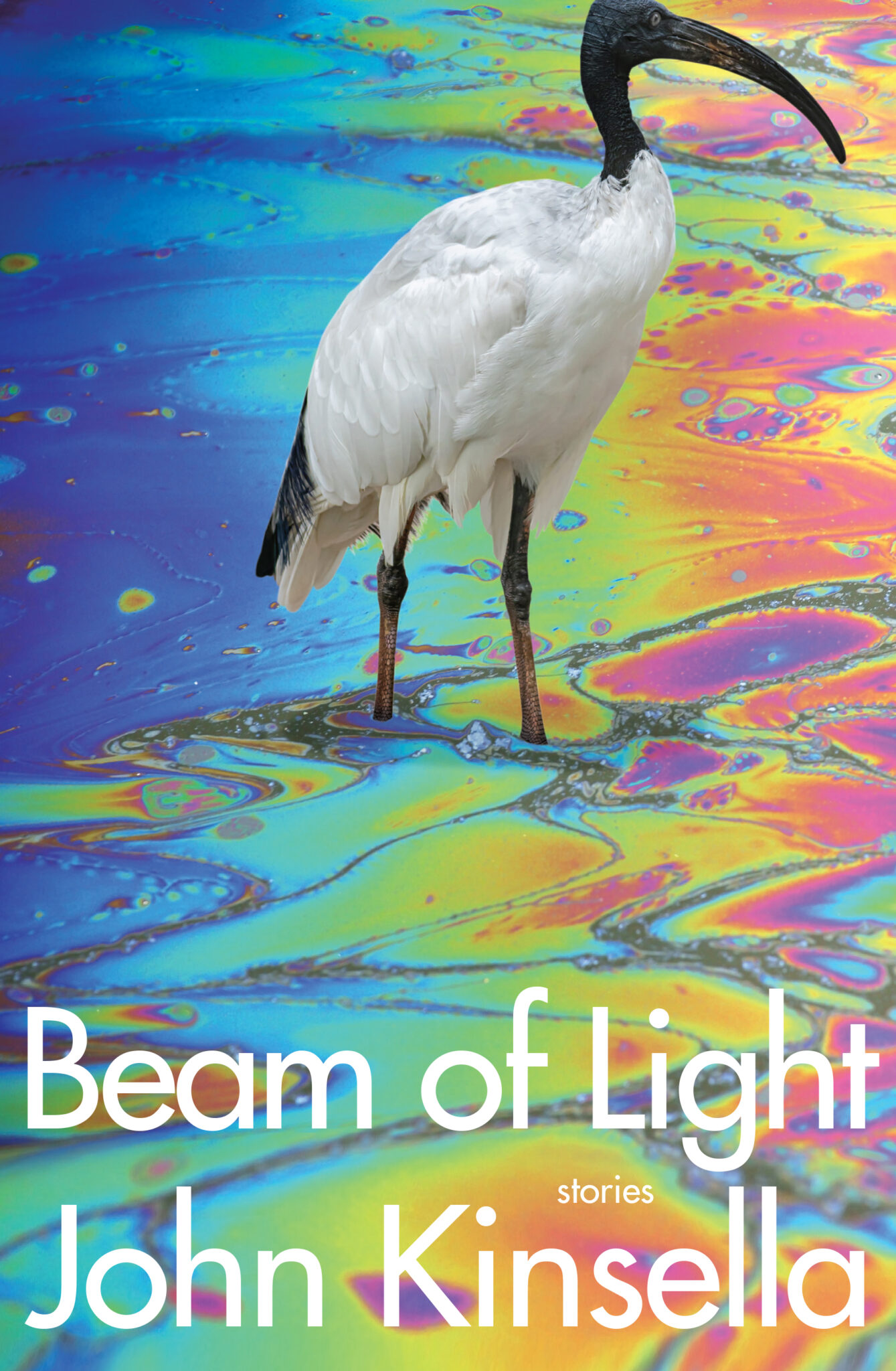 Reviewed by Magdalena Ball
Reviewed by Magdalena Ball
Beam of Light
By John Kinsella
Transit Lounge
Paperback, ISBN: 978-1-923023-16-1, 272pp, September 2024, $32.99
There’s something ominous in John Kinsella’s Beam of Light. It’s a subtle crackling below the surface running through all of the stories. Perhaps it’s the legacy of colonialism which is woven like a malevolent thread in the book, connecting the stories and extending into the lives of characters who are flawed in some way often without knowing why. There are 29 short stories in the collection, most only 6 or 7 pages. The stories chart the lives of characters who are flawed in some way—‘classic low-achieving self-sabotaging could-have been’ types. These are ordinary people with, mostly, good intentions, who make bad choices that are perpetuated and supported by the structures within which they live. The harm is always close but invisible – the “dust of the newest colonialism”, tormented ghosts of the displaced, housing estates, strip malls and transmission towers built on the destruction of forests and animal habitats, genetically modified, pesticide-riddled intensive farming, corporate greed, or even in the smoking fumes of the many different types of vehicles that populate these stories.
The ominous and the transformative sit side by side in these tales which move across a connected landscape, mostly the farms and suburbs of Kinsella’s own Wheatbelt and Perth Hills region as well as Ireland – the return home that doesn’t quite work. The counter to the dark shadow is the epiphany that comes at various times in each story – sometimes lasting only a few seconds, as in the light beam across a baby’s face in the title story:
The curtains in baby’s room are nice, she’d said, having found them in the op shop and washed them and hung them in a joyful mood with his enthusiastic h help one day — a good day, it had been a good day, and he’d played with baby on the floor and everyone had laughed.
A beam of light shone through the crack I the curtains straight onto baby’s face, which lit up with its dream, with a twitch and a scrunch of the mount and closed eyes followed by a disturbed movement back and forth. (7, “Beam of Light)
The story, which first appeared in Meanjin, contrasts the innocence of the baby’s face in that light beam and the joy it creates, against the car light of thieves, the dust of the quarries, and the lack of money all of which seem to combine to lead to an implied knowledge of a future that will not be bright. The inevitability of collapse doesn’t diminish the moment of light.
The stories are full of these contradictions as they travel through childhood, coming-of-age, many types of addiction and attempts to get clean, and a toxic masculinity that goes hand in hand with colonisation, encompassing bullying, killing animals, and eroding the rights of traditional owners. These themes feel very natural, as if we were reading memoir, and though the tone and tense often shifts, its handled subtly.
The women, as a rule, come across better then the men, calling out the pretension, self-delusion, and the toxic machismo that undermines these characters again and again, even as they try to change. The link between this toxicity and the convict/colonial settlement of Australia is not too overt but it’s inherent in every faltering moment:
In Australia, at barbies…BBQs…he’d always been so appropriately loudmouthed. That was how he got his Australian Affair happening – being loud and bold in front of his wife, dripping testosterone like gull shit down Aussie asbestos fences, the bull dust of Australian station leases where his mining boss worked steadily away at eroding the rights of traditional owners, bringing him in on technical matters as an ‘authority’, as a foreign voice of reason.” (131) “Kitten Under the Bonnet”
As you would expect from one of Australia’s most revered poets, the writing is condensed, silky and often beautiful even when danger and dissolution are near:
The lake was pristine, they agreed, and it would be wonderful to wake to with the collusion of seabirds and hinterland birds crossing over, interacting, fusing and dividing in the bush around, on the lake’s edges, on the lake itself. (221, “Crossing the Rivermouth”)
There is also a tenderness in the vernacular that Kinsella captures so well. These are local people, often disadvantaged people who speak in recognisable ways, and live lives that feel real, trapped by the legacy they’ve inherited or the ways of being in the world that they’ve been taught by society. In many ways the characters of Beam of Light are cut off from themselves, but looking up at the stars (multiple light beams) or walking in the woods, they have moments, often fleeting, of self-awareness, where the individual becomes part of a collective and the pain resolves:
And in the pure stillness between and of the night-bird song and the start of the dawn chorus, they would surely hear the rivalry and pragmatic emphasis of the ocean, the deep wild southern ocean that existed outside the restraint of self-admonishing, for the student at least. (221, “Crossing the Rivermouth”)
Beam of Light is a powerful collection by an author who is capable of working across genres and with great subtlety. The book illuminate truths about the worst of human nature and the deep destruction we are creating in the world, while reminding us that we are capable of better.